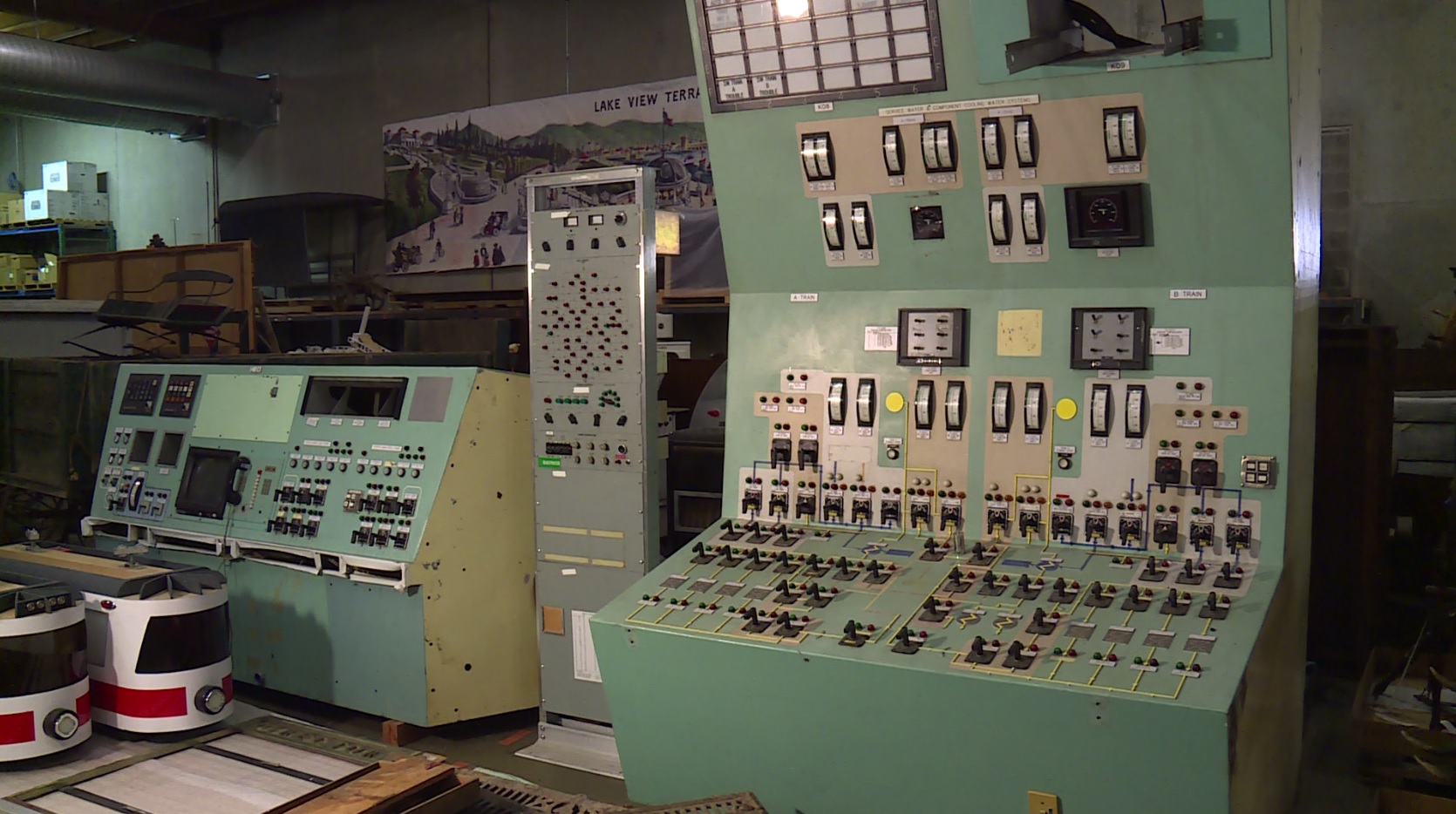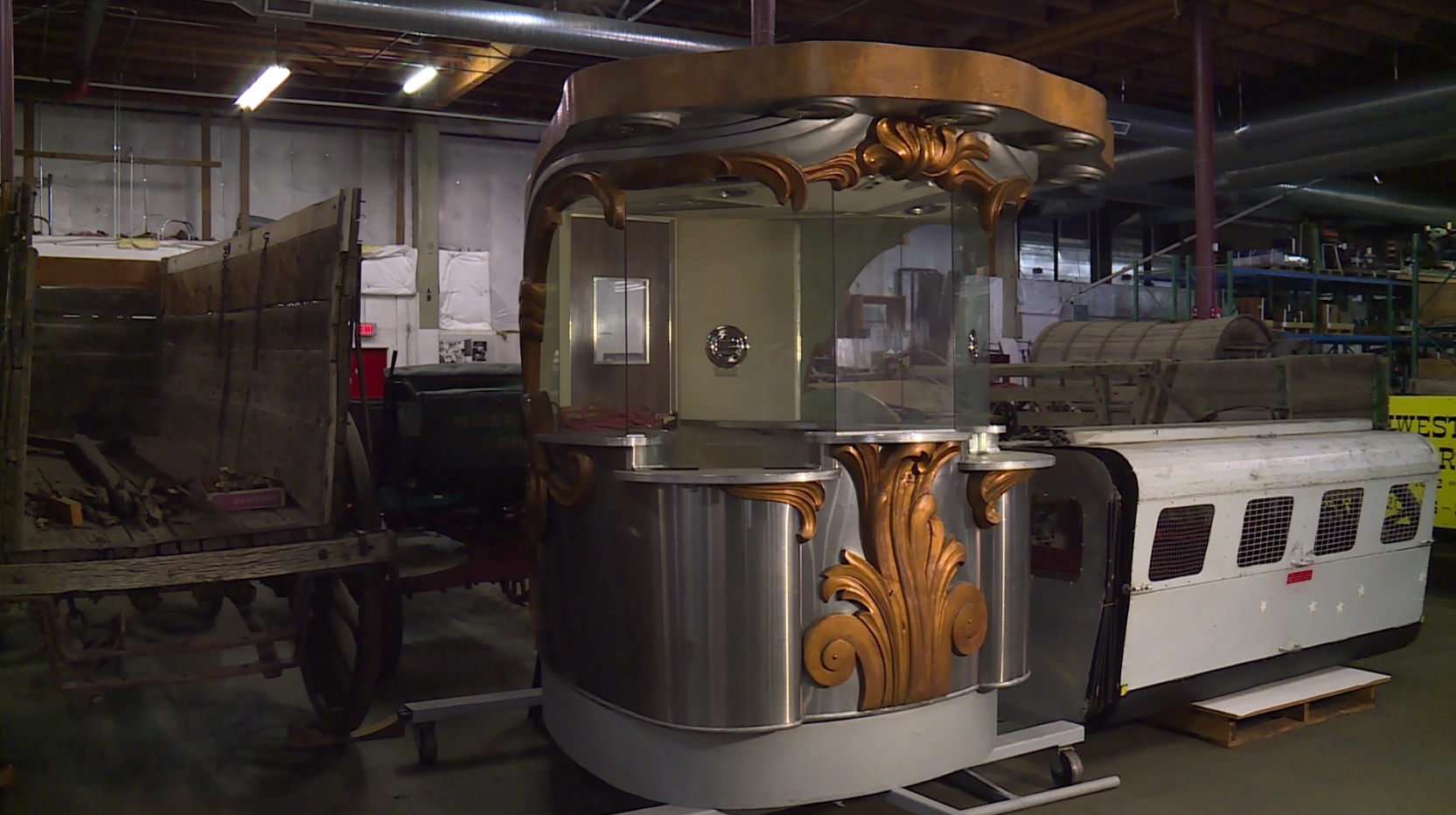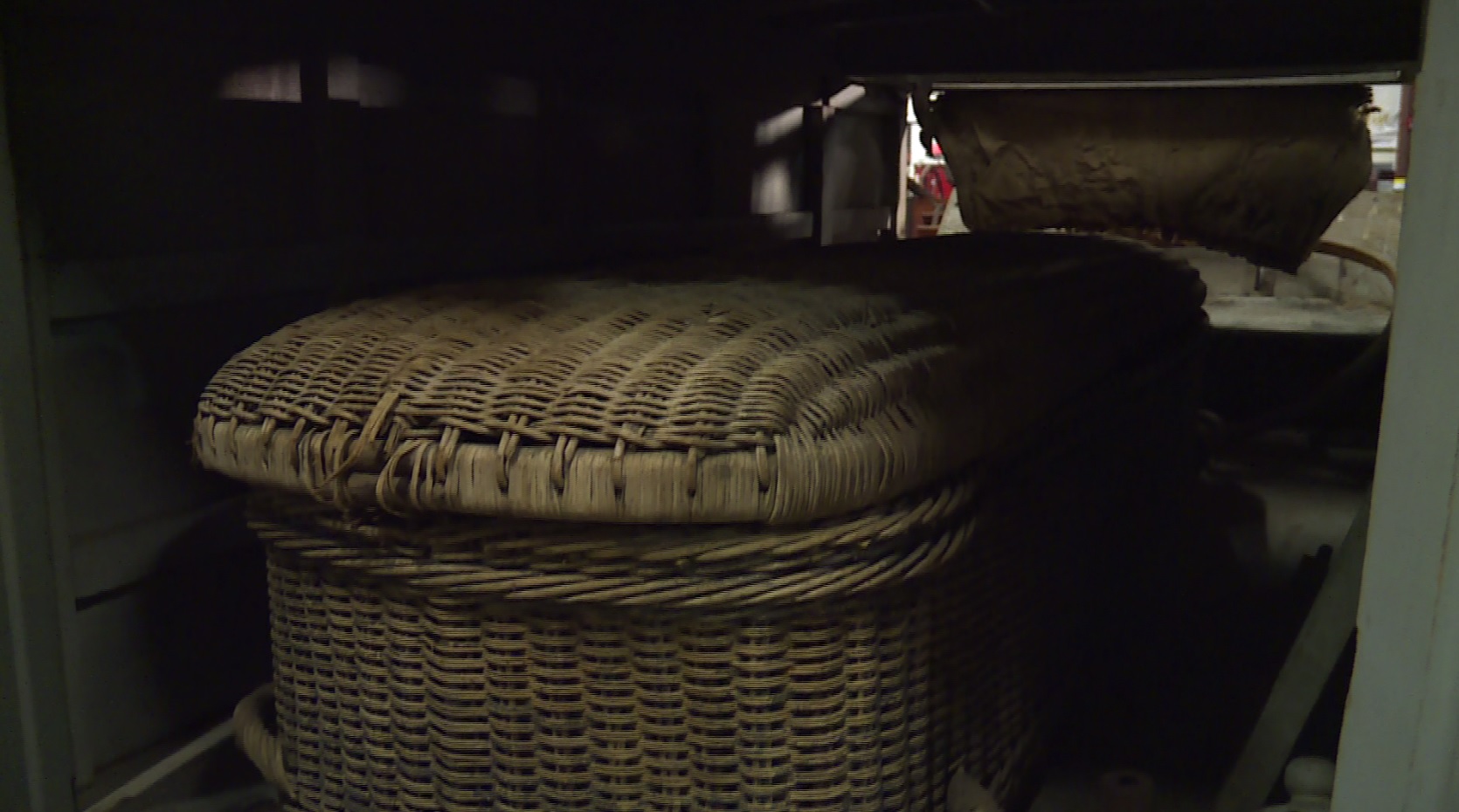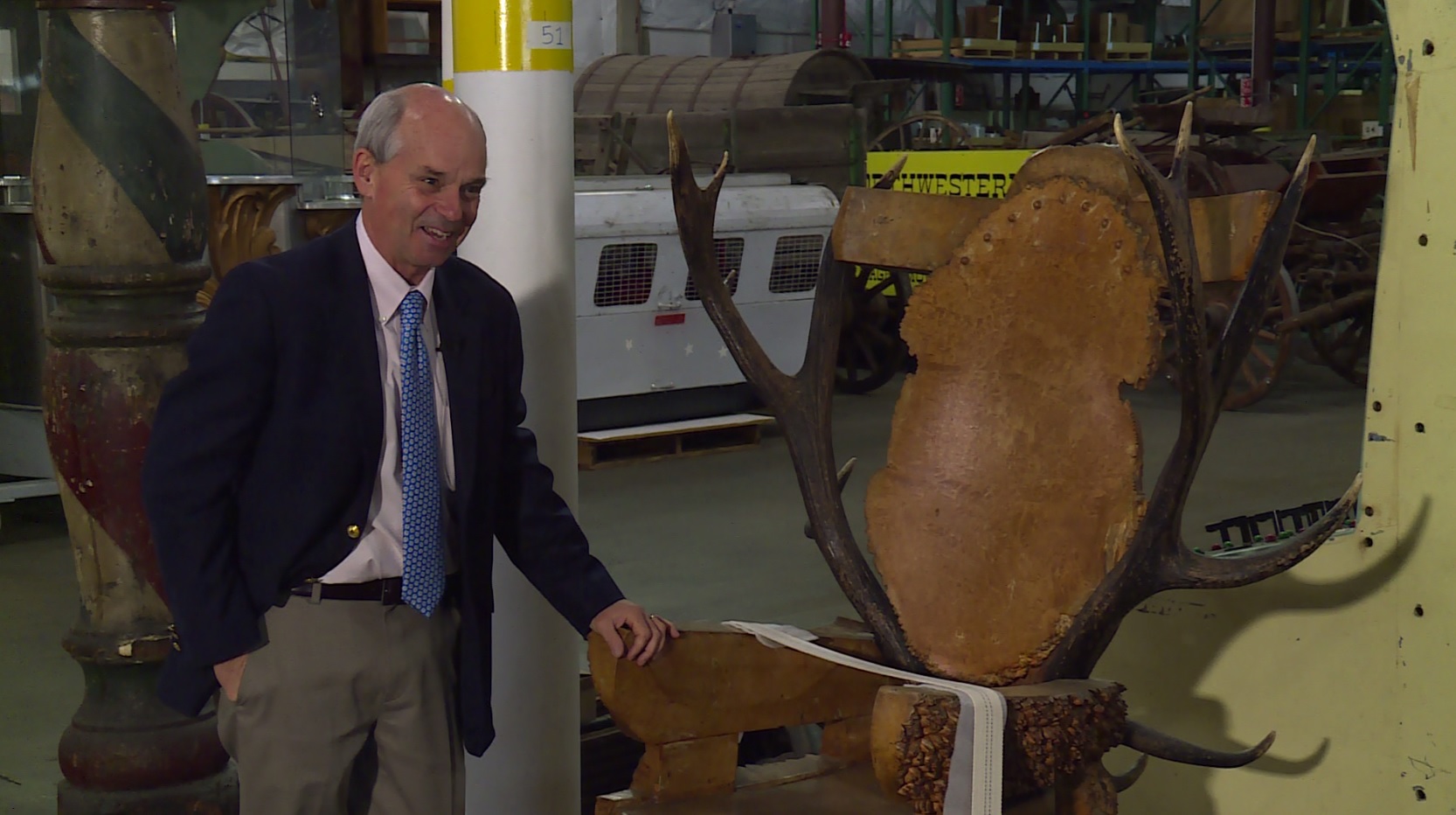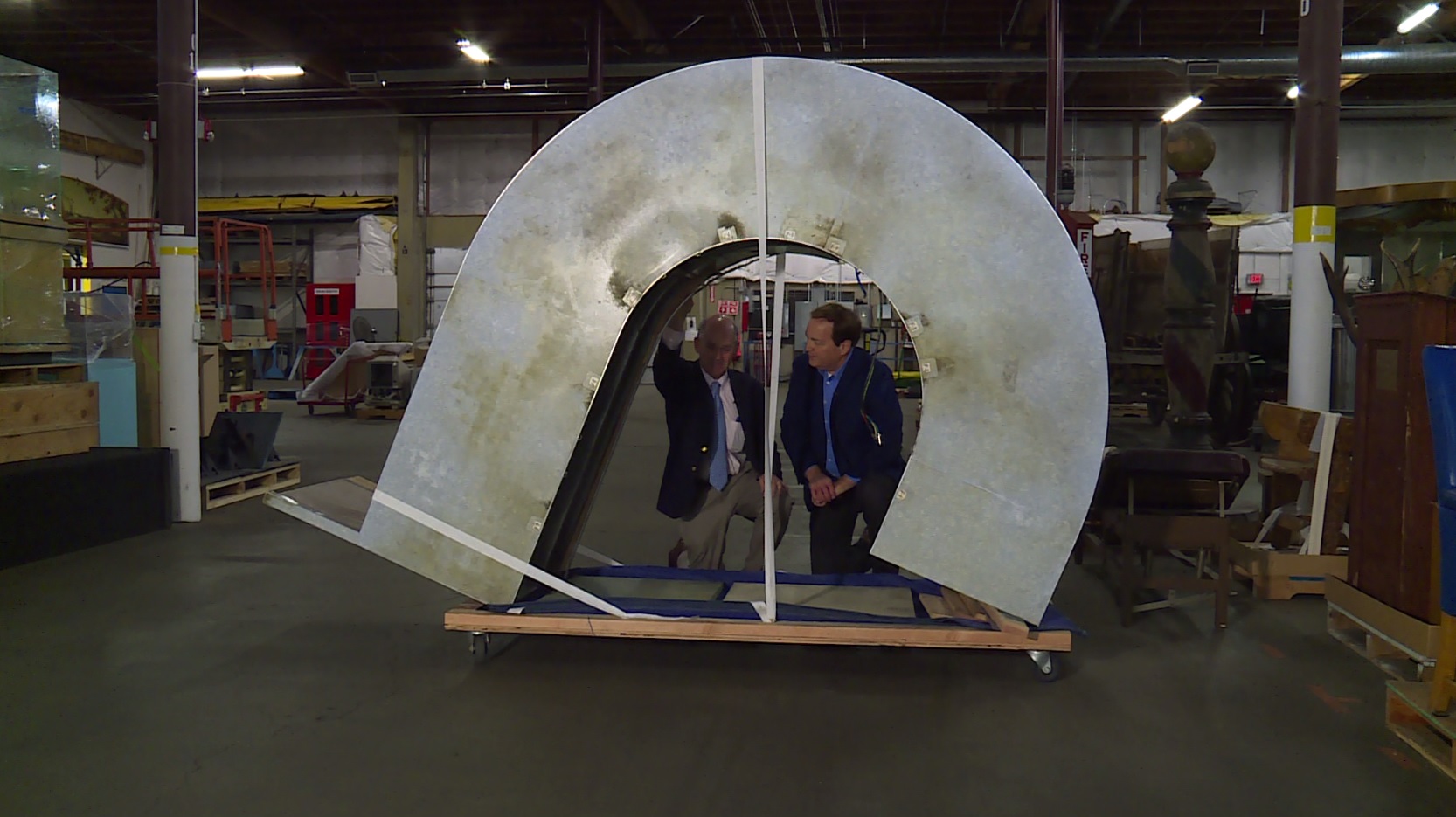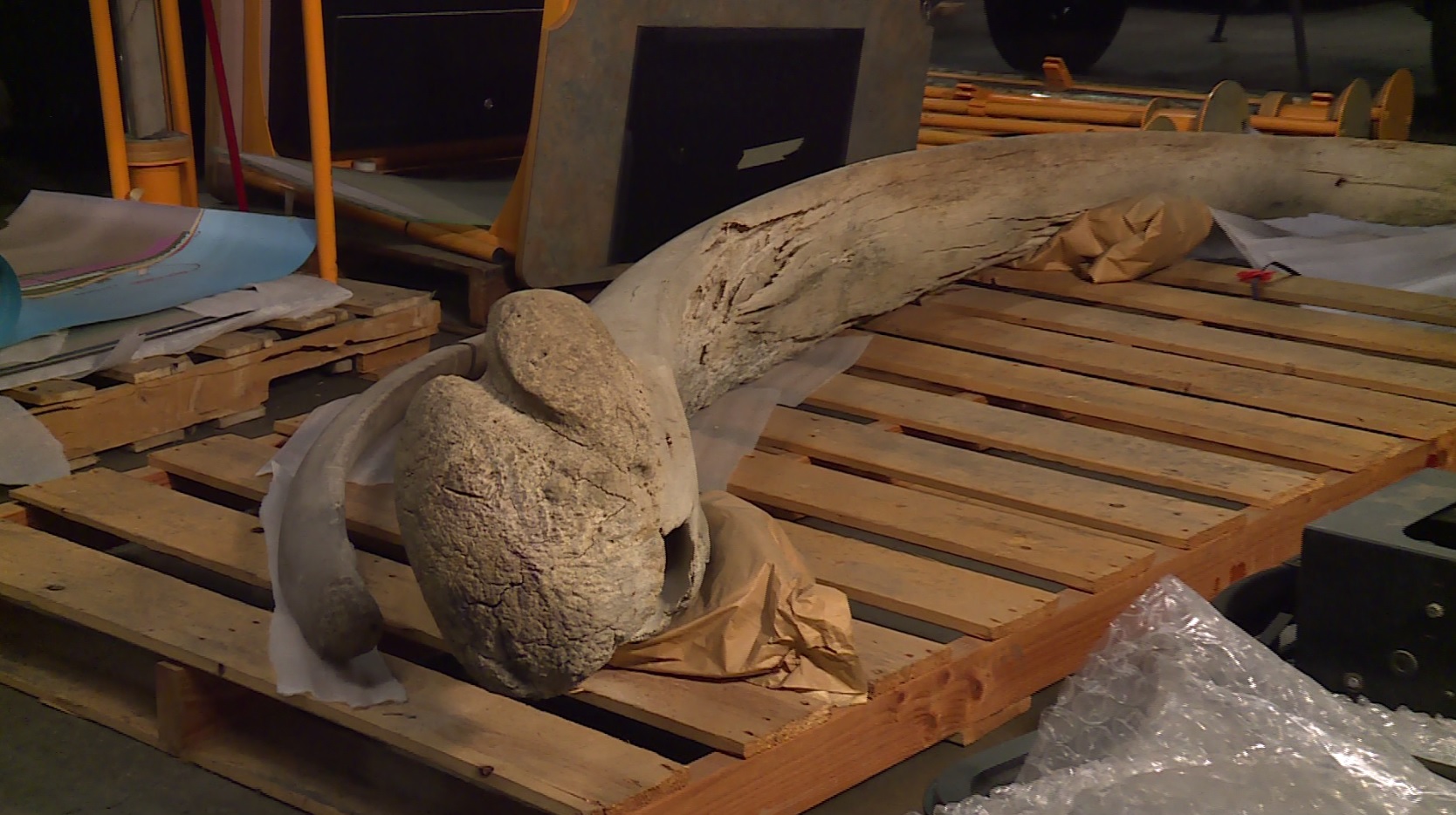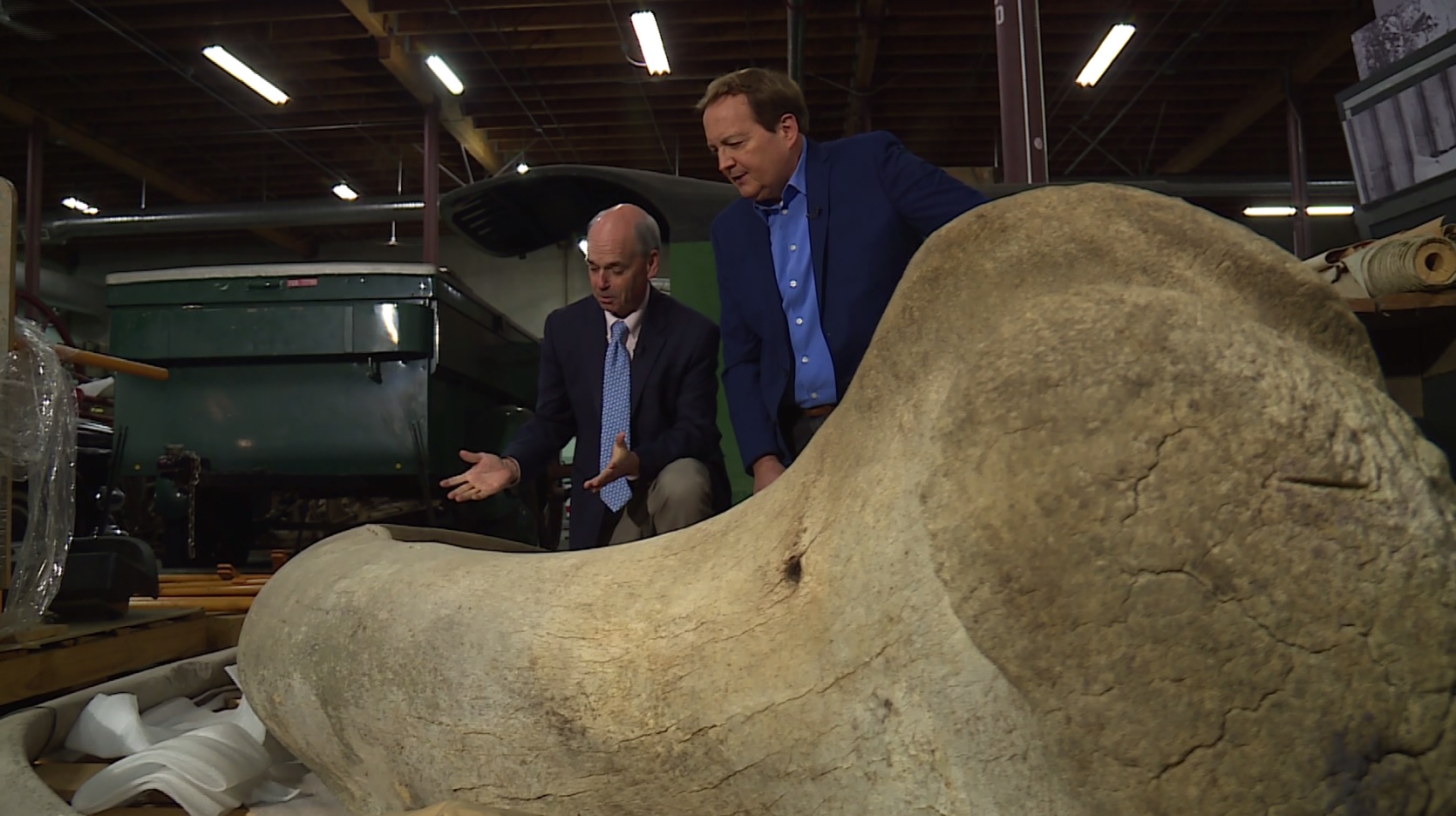PORTLAND, Ore. (KOIN) — A secret warehouse filled with treasures from Oregon’s past sounds like something from an Indiana Jones movie — but it’s a real vault of artifacts from the Oregon Historical Society.
Jeff Gianola and Oregon Historical Society Executive Director Kerry Tymchuk took a tour of the warehouse where many of Oregon’s treasures are kept.
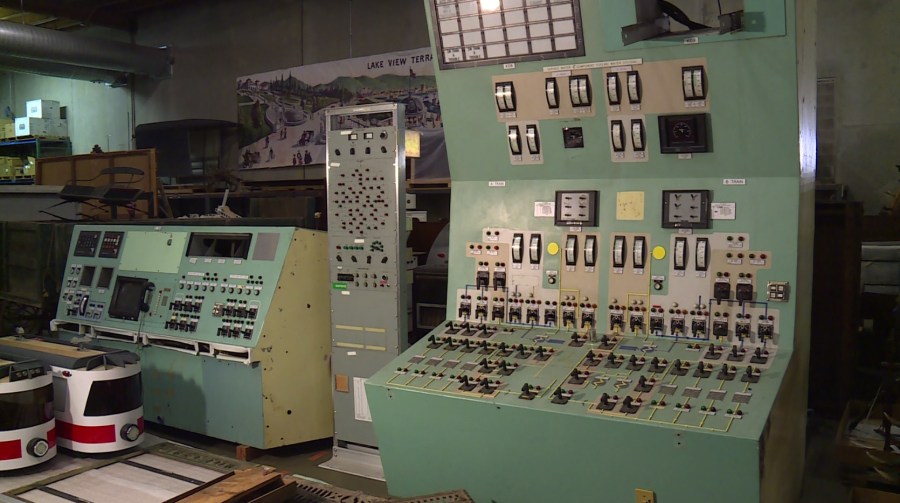
“Right here is the control panels for the Trojan Nuclear Power Plant,” Tymchuk said.
Trojan was Oregon’s only nuclear power plant. It came online in 1976 and was decommissioned in 1992.
“Right before they imploded the whole building there it was given to use — and before you ask, yes it’s been tested, there is no nuclear fallout on it. But it’s one of the most fascinating pieces because that was such an iconic part of Oregon history,” Tymchuk said.

Old Portland movie theaters were an important part of history but their art deco architecture has been lost to time.
“This was the ticket book for the Fox Movie Theater in downtown Portland, where people would line up to get tickets,” Tymchuk said. “And there’s a big neon sign — FOX — and we got the neon F and O and X as well.”
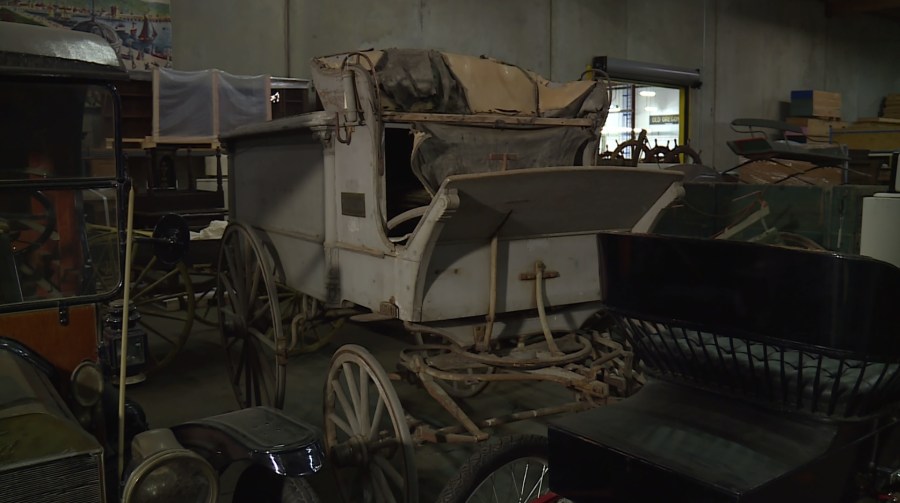
“This is what was called an undertaker’s body wagon, or essentially a hearse,” Tymchuk said. “WO Donaldson was his name and you could imagine he might get called if someone had died … He would go out to the residence in a horse-drawn hearse pick up the body.”

“Some people look at this and say, is this a dinosaur bone?” Tymchuk said. “It’s not, but it’s the bone of a whale and it’s believed to be the bone of the whale that Lewis and Clark describe in their journals when they were here, of course in the early 1800s in the Cannon Beach area. In the journals, they write about a whale that washed up on shore.”
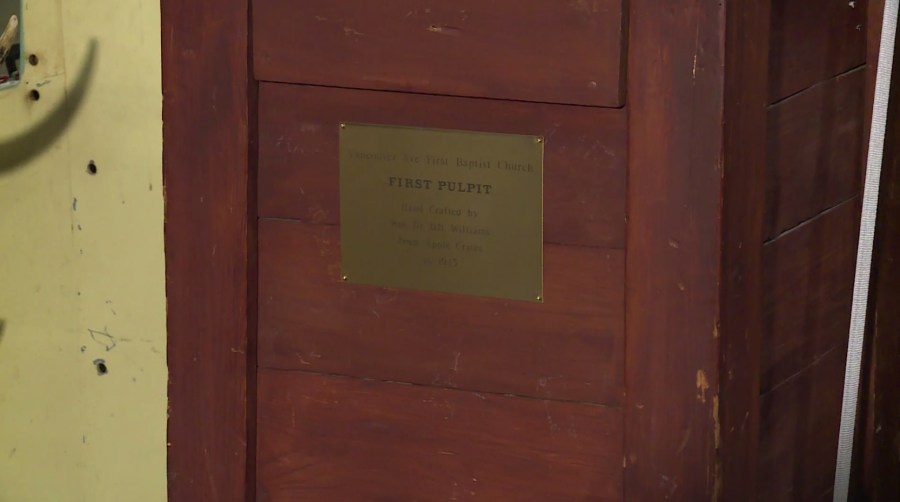
Pulpits from historic churches are stored with some ornate woodwork.
“This is from the Vancouver Avenue First Baptist Church, which was one of the first African American churches in North Portland,” Tymchuk said. “This dates back to 1948… it was made from apple crates.”

“These two wheels are from the Battleship Oregon, and one of the great stories of Oregon history, the Battleship Oregon was called the Bulldog of the Navy back in the late 1890s,” Tymchuk said. “It was stationed in San Fransisco when the Spanish American War began, President McKinley ordered the battleship to steam to the theater of war.”
Read: Where We Live: History, rebirth of ‘Battleship Oregon’
It took 66 days for the ship to reach the battle and by then the war was over. It still fired up American public support of the need for the Panama Canal.
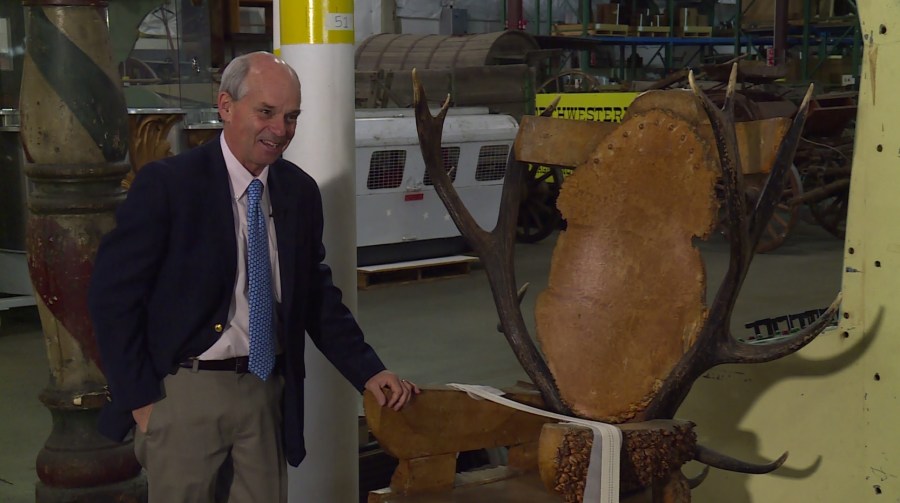
“It looks like something from Game of Thrones or from Gaston of Beauty and the Beast, who used antlers in all his decorating famously,” Tymchuk said. “And this is from the national or international Elks convention that was held in Portland in 1912 and hand-carved by a fellow here in Oregon out of maple. The chair is to be used by the head Elk at the convention.”
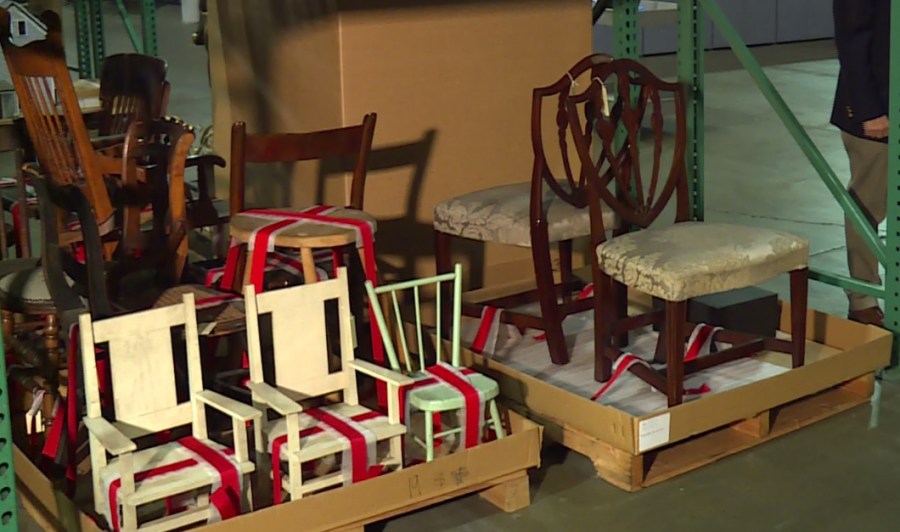
There are hundreds of chairs in the vault. Some made their way west with the pioneers on the Oregon Trail but two are among the most significant.
“These two chairs … they were a wedding gift to a fellow named Captain Robert Gray who in the 1790s gets credit for discovering the Columbia River,” Tymchuk said. “Even though as he sailed up the river the Native Americans were waving at him but they didn’t get credit for discovering it his ship was called the Columbia Rediviva, he named the river after his ship.”

These colorful stools are part of history, they came from the old lunch counter at the downtown Portland Newberry’s. The lunch counter is also in the collection.
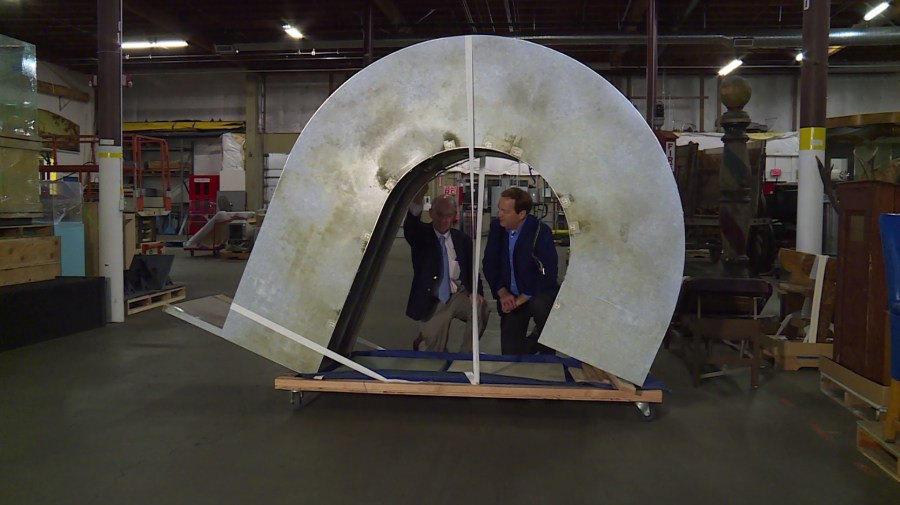
“Formica counter from downtown Newberry’s, where people would go down and have lunch … drink sodas, have burgers and fries and occasionally as you look up here — stick their gum underneath the counters,” Tymchuk said. “We still have some of the gum actually here underneath the counter. We have historic gum.”

Track horses and cowboys are also part of Oregon’s history. The vault is home to dozens of historic saddles but one is most treasured.
“So this saddle, you see ‘let er buck’? And that’s the theme of course of the great Pendleton Roundup,” Tymchuk said. “Well this saddle was presented to a cowboy named Jackson Sundown who was a Native American cowboy and he won this for winning the bronco busting contest back in the 1916 Pendleton Roundup. So this 103-year-old saddle is just gorgeous and we keep it in tip-top shape right here with this collection of other saddles.”
Jeff’s tour of the treasures of Oregon is just getting started. Over the next few weeks, he’ll discover and uncover more treasures that tell the story of Oregon.
“History is the past, history is who we are and why we are the way we are,” Tymchuk said. “We’ve got to preserve history. Show future generations what past generations did and collected. How they lived, what they saved, what was important to them. So we got a little bit of everything here.”
